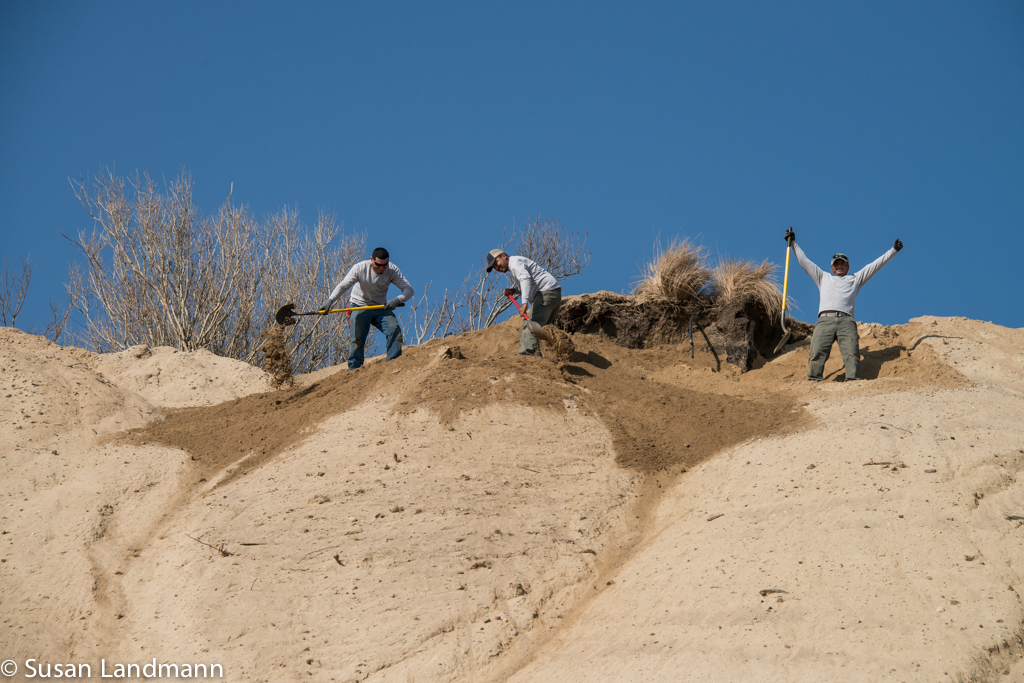SBPF is the commonly-used abbreviation for the Siasconset Beach Preservation Fund, a 501(c) 3, private non-profit organization established by a group of ‘Sconset property owners “concerned about erosion of the Sankaty Bluff and the threat it poses to the village of ’Sconset.” Since its founding in the mid-1990s, SBPF has proposed and installed several erosion-control engineering devices designed to slow erosion and protect homes perched on the top of the bluff. Below, we answer some of the most common questions we have heard about SBPF and their current campaign for the installation of hard armoring. For a more visual representation of what's happening see the timeline and galleries at the bottom of the page.
SBPF Q&A
Does SBPF protect beaches, as its name suggests?
It appears that SBPF is about preserving private houses, not beaches. The scientific reality is that erosion creates beaches, and efforts to halt or slow erosion result in degradation and eventual destruction of beaches.
How have property owners along Baxter Road, which runs parallel to the ocean from the village of ‘Sconset north to Sankaty Lighthouse, reacted to erosion of the bluff there?
Erosion has been threatening the bluff in ‘Sconset for decades. When the original 88 lots upon which these structures are located were laid out by the developer, William Flagg, in the late 19th century, the parcels purposely included plenty of land for inland retreat. Unfortunately, over the years, various property owners subdivided these parcels and sold off portions farther from the bluff, leaving themselves and subsequent owners little room to move their structures back from the eroding bluff edge. [Nantucket, A Natural History, by Peter B. Brace, 2012, pp. 254-266.] By contrast, in recent years, 16 property owners have chosen to relocate their homes either off their lots entirely or landward from the bluff. [Information provided by SBPF dated August 1, 2012.]
What about Sankaty Lighthouse?
The ‘Sconset Trust decided to move the historic lighthouse back from the eroding bluff, where it had stood for over 150 years, and did so in 2007, at a cost of about four million dollars, raised through private subscription. The iconic beacon was relocated approximately 400 feet landward out of harm’s way, at least for the next 100 years.
What local regulatory body is involved in the permitting of erosion-control structures?
The Nantucket Conservation Commission, a body of 7 citizens appointed by the Board of Selectmen, hears applications for proposed work within the jurisdiction of the local Wetland Bylaw and the State Wetlands Protection Act.
If the Conservation Commission is the board that regulates erosion-control projects such as those proposed by SBPF, why is the Town of Nantucket involved?
The Town is involved in SBPF matters because, unlike most other beachfront property, the most of the beach below the bluff is owned by the citizens of the Town of Nantucket. This is the property on which various SBPF erosion-control projects are, and have been, sited. As a consequence, projects cannot be built unless the property owner, the Town of Nantucket, gives permission. The coastal property below the bluff in Siasconset is a vestige of the Proprietors’ Roads that were originally laid out along the perimeter of the island and the great ponds by the early Nantucketers. In actuality, the Siasconset property owners whose houses sit atop the bluff are not waterfront property owners. The Town is.
So the various SBPF erosion-control projects that have been installed during the past twenty years or so have been located on Town-owned land?
Yes. The citizens of Nantucket have, in effect, allowed SBPF to use public property to attempt to protect their private interests.
What are some of the ways in which SBPF has tried to control erosion?
A number of different projects have been installed. Beach dewatering systems were permitted and installed in three locations along the Siasconset shoreline. Beach terracing was initially installed with sand-filled coir (coconut fiber) bags, treated timbers and plastic dune-guard fencing. The terracing design was amended several times to remove several of the more problematic elements including the timbers and dune-guard fencing. The most recent terracing permit included using sand-filled jute “burrito” bags held in place with anchors and covered with sand. [See SBPF Timeline for detailed information about the various erosion-control attempts the group has made since its inception.]
Were they effective?
The beach dewatering systems did not function as they were intended to, and nearly ten years after initial installation, the northern two were finally removed from the beach. One system still remains in place beneath the beach at Codfish Park. Aspects of the terracing projects have been successful, as evidenced by the peninsula-like bulge of the properties where the terraces have been constantly re-nourished (covered with sand) and maintained. However, most of the harder elements, including the timbers and dune-guard fencing, were not effective and caused a great deal more harm than good. Some terracing collapsed during a storm, and treated timbers and coir- netting bags were strewn along Nantucket beaches and waters for months. Fortunately, no one was injured by this debris.
Didn’t the voters say NO to an SBPF-proposed project a couple of years ago?
Yes. The voters overwhelmingly said no to SBPF’s use of Town-owned land below the bluff for a beach-dredging project in 2009. After the ballot vote, SBPF withdrew their application, which was pending before the Conservation Commission.
What is the recent controversy about geotubes?
SBPF installed a 900-foot geotube seawall at the base of the bluff in the area of northern Baxter Road in the winter of 2013 and 2014 under a 30-day Emergency Order. Subsequently, after seven months of hearings, the Conservation Commission denied permitting for the structure. SBPF appealed the decision to the State Department of Environmental Protection (DEP), which issued a Superseding Order overruling Nantucket’s ConCom. The ConCom appealed that decision, and litigation is underway. Currently, SBPF, the ConCom and the Board of Selectmen are in negotiations to see if a settlement of the matter can be agreed upon.
What are geotubes?
Geotubes are long sausage-like geotextile bags filled with a slurry of sand and water. They are considered hard armoring. Hard armoring has been prohibited in Massachusetts since 1978 because of its adverse impacts. However, buildings constructed prior to 1978 are grandfathered, under certain conditions. The Nantucket Conservation Commission determined that the SBPF proposal to construct the geotube seawall did not meet those conditions.
SBPF Timeline














